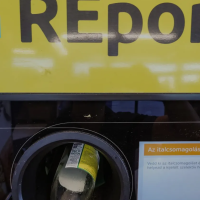Circular Economy Package: Everything you need to know
Ez is érdekelhet

(Article shared from edie.net, "Circular Economy Package: Everything you need to know" March 15, 2017)
In light of the European Parliament's decision to reinforce more ambitious recycling targets within the long-awaited Circular Economy Package, edie takes a detailed look at how the proposed measures could affect businesses, especially in light of the UK's imminent departure from the European Union (EU).
With so much hype in the build-up to the delivery of the EU’s Circular Economy Package over the past few years, many businesses have been left with big questions about the implications of the new framework for them. When is the Package being enforced? What are the targets? Are those targets legally-binding? And, crucially, how will Brexit impact the UK’s involvement in the Package?
The Circular Economy Package: A potted history…
Although waste management across the EU has improved considerably over the past couple of decades, almost a third of municipal waste is still landfilled and less than half is recycled or composted, with wide variations between Member States. In 2014, the European Commission (EC) put forward an initial Circular Economy Package to address the issue and help European businesses and consumers make the transition to a circular economy where waste is seen as a ‘resource’ that can be recycled, re-used or remanufactured. In December 2015, the EU controversially withdrew the Circular Economy Package and re-tabled a revised version. The Commission claimed the new recycling targets would present a stiff but achievable challenge for some Member States, but green groups said that the only ambition shown had been for “watering down” targets. The Package will be backed by €5.5bn from the European Structural and Investment Fund (ESIF) and €650m from Horizon 2020 (the EU funding programme for research and innovation).
What is the current state of play with EU waste policy?
The 2008 Waste Framework Directive sets the overarching legislative framework for EU waste policy. The Directive sets binding targets to be achieved by 2020: preparing for reuse and recycling of 50% of certain waste materials from households and similar sources, and preparing for reuse, recycling and other recovery of 70% of construction and demolition waste. Meanwhile, the 1999 Landfill Directive bans landfilling of untreated waste. The Directive sets a goal that the share of biodegradable municipal waste going to landfills may not be greater than 35% in 2016, compared to the baseline year of 1995. The Packaging Waste Directive waste aims to protect the environment and to safeguard the functioning of the internal market. It requires Member States to take measures to prevent packaging waste and to develop packaging reuse systems.
When will the Package be enforced?
The Package is currently going through the EU legislative process. Before the Circular Economy Package is passed into law, all three European institutions (the European Council, European Parliament and the European Commission) must have an agreed stance, which they will then take into a series of discussions. Both European Parliament and Council of Ministers can amend the legislation but must agree upon an identical text before those bills can become law. This means that a final package will likely not be established until the second half of 2017. Malta, which holds the rotating EU Presidency, has said it will try to reach a deal with MEPs before 1 July, when its six-month Presidential term ends.
Who does the Package effect?
The targets listed under the Circular Economy Package will be implemented by national governments across the 28 Member States that are in Europe, and are targeted at the waste performance of households and businesses. It is anticipated that the measures set out in the Circular Economy Package will be completed before the UK leaves the EU, so the UK will be obliged to give effect to them for as long as it remains in the EU (see more on Brexit at the end of this article).
What are the targets listed under the Package?
The original Circular Economy Package intended to increase recycling levels and tighten rules on incineration and landfill. It consists of six individual bills on waste, packaging, landfill, end-of-life vehicles, batteries and accumulators, and waste electrical and electronic equipment (WEEE).
The re-tabled package, unveiled in December 2015, included eco-design rules for products to make them easier to recycle. But it also had lower 2030 targets for recycling municipal and packaging waste, and replaced a 2025 aspirational landfill reduction target of 25% with a mandatory 10% goal for 2030.
But in a new development this week (14 March), Members of the Parliament (MEPs) unanimously rejected these ”watered-down” ambitions. The plenary vote has advocated to reinstate the 70% target for municipal waste recycling, strengthening current proposals by 5%.
Meanwhile, a 2030 target for packaging recycling was voted to be 80% - higher than the 75% previously backed by the Commission. And the waste-to-landfill target has been restricted to 5%, replacing a mandatory target of 10% by 2030. MEPs have also voted for a European Union (EU) food waste reduction target of 30% by 2025 and 50% by 2030, compared to 2014.
The Package also includes a series of other measures and targets, including:
- The promotion of economic instruments to discourage landfilling;
- A ban on landfilling of separately collected waste;
- Simplified and improved definitions and harmonised calculation methods for recycling rates throughout the EU;
- Concrete measures to promote re-use and stimulate industrial symbiosis - turning one industry's by-product into another industry's raw material;
- Economic incentives for producers to put greener products on the market and support recovery and recycling schemes (e.g. for packaging, batteries, electric and electronic equipment, vehicles).
Are those circular economy targets legally-binding?
Four legislative proposals contained in the Package are legal acts: Waste Framework Directive; Landfilling Directive; Packaging Waste Directive; Directives on end-of-life vehicles, on batteries and accumulators and waste batteries and accumulators, and on waste electrical and electronic equipment (WEEE). However, the 2030 food waste targets are only a voluntary aim, and campaigners are now calling for the 50% reduction target to become legally-binding at Member State level.
What are the pros and cons of the Package?
The proposed actions aim to contribute to "closing the loop" of product lifecycles through greater recycling and re-use, and bring benefits for both the environment and the economy. The Commission states that the measures could bring net savings of €600bn or 8% of annual turnover for businesses in the EU and will reduce total annual greenhouse gas emissions by 2-4%.
But the financial benefits of the Package at a national level are less clear. According to one recent report from UK-based organisation Policy Exchange, British businesses could in fact lose as much as £2bn over the next 20 years as a result of the Package. Policy Exchange’s head of environment and energy Howard told edie that the EU Package is “ill-defined”, “poorly thought through” and ultimately represents a poor waste management system for the UK.
A number of other serious side-effects to the Package have been highlighted by UK waste experts, such as the use of European weight-based recycling targets, which often focus recycling on heavier materials whether or not they are the highest environmental priority.
Given that the UK is currently struggling with some of the existing recycling targets, it remains to be seen whether the UK Government would benefit from the implementation of these new measures in the run up to, and after, leaving the EU.
How will Brexit impact the UK’s involvement in the Circular Economy Package?
The UK Government is expected to trigger its two-year negotiation period for leaving the EU this month, giving a departure date of early 2019.
If the UK wishes to continue participation in the single market, it would need to sign up to the European Economic Area (EEA) Agreement (EEAA). A quick look at the current state of legislation confirms that if the UK adopted this route post-Brexit, actually very little would change in relation to environmental controls and the majority of legislative proposals that form part of the Package once enacted would continue to apply to the UK.
However, the big stumbling block with EEA membership will be the requirement to adhere to the principle of the free movement of people. Many EU leaders have stated publicly that the UK will not be allowed to introduce such controls which would conflict with the free movement principle if it wishes to join the EEA. For that reason, membership of the EEA at the moment seems very unlikely.
As a result, the UK would not be directly bound by many of the EU environmental controls, including those relating to the Circular Economy Package. If concepts in the Package, such as minimum recycled content in certain products, are brought forward, then these obligations would apply indirectly to the UK because they would affect products being supplied into the EU. However, other elements of the Package, such as recycling targets, would not directly apply to the UK and the level of ambition in this area would be left in the Government’s hands.
The likelihood is that, even without a direct or indirect obligation from the EU to adopt the Circular Economy Package, the UK will need to take its own steps to incorporate the circular economy concept into its own policies and from there to introduce its own legal controls. View all of edie’s circular economy content here.
George Ogleby







